Hanfu Clothing Systems: A 4,000-Year Journey Through Chinese Fashion
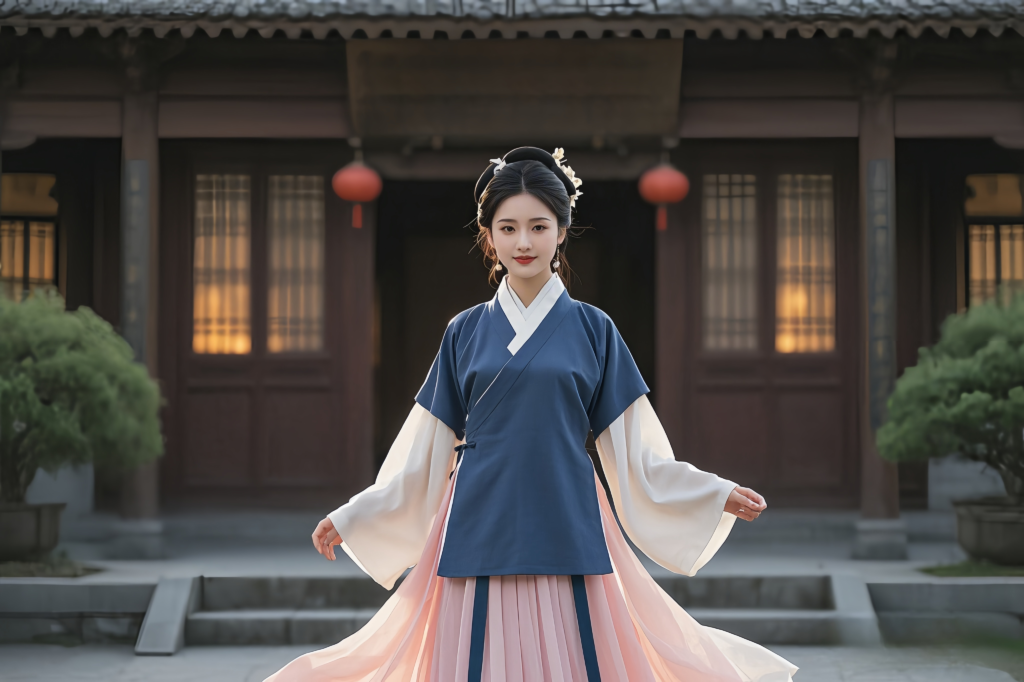
From ceremonial robes to daily wear, Hanfu clothing systems have shaped Chinese aesthetics for millennia. Rooted in Confucian philosophy and dynastic innovations, these styles—Shangyi Xiachang, Shenyi, Pao, and Ruqun—reflect China’s cultural adaptability. This guide explores their origins, designs, and why they remain iconic today.
1. Shangyi Xiachang System: The Foundation of Hanfu
The Shangyi Xiachang (“top and bottom separation”) Hanfu clothing systems is the oldest Hanfu structure, dating back 4,000 years. It splits garments into an upper Shangyi (top) and lower Xiachang (skirt-like “Chang”). Historically, this system symbolized ritual propriety (li) and was the standard for ceremonial attire until the Ming Dynasty.
- Key Features:
- Versatility: Adapted into variations like Shangru Xiaqun (tunic + skirt) and Shangyi Xiaku (top + pants).
- Cultural Legacy: The term Yishang (“clothing”) derives from this system.
Example: The portrait of Song Dynasty poet Su Shi often depicts him in a Shangyi Xiachang set, blending simplicity and dignity.
The “Shangyi Xiachang” Hanfu clothing systems is not only the most fundamental form of Chinese clothing but also represents the highest standard for ceremonial attire throughout ancient Chinese history, remaining prevalent until the Ming Dynasty. This system originated and became widespread during the pre-Qin era (before the Qin Dynasty), forming the foundation of Hanfu. The more detailed clothing styles we see in the later development of Hanfu, such as the “Shenyi” and “Pao” Hanfu clothing systems, evolved from this basic structure.

Portrait of Su Shi Wearing a Top and Skirt
2. Shenyi System: Seamless Unity of Form
Emerging during the Zhou Dynasty (1046–256 BCE), the Shenyi system (“deep garment”) sewed the top and bottom into one continuous piece. It became the pinnacle of ceremonial Hanfu, worn for over 3,000 years.
- Two Main Styles:
- Zhi Ju (Straight Hem): Clean lines for formal occasions.
- Qu Ju (Curved Hem): Wrapped design popularized in the Han Dynasty, favored for its elegance.
Pro Tip: Modern Hanfu designers like Hanfu Street revive Shenyi styles for weddings and cultural festivals.

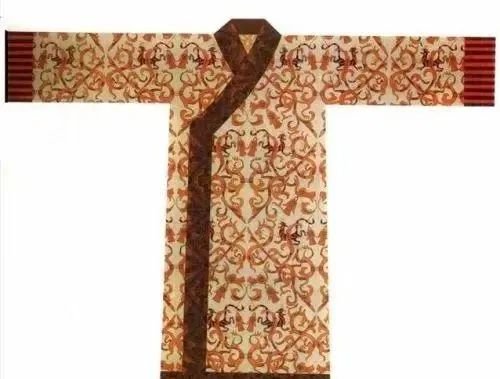
Warring States Straight-hemmed Garment
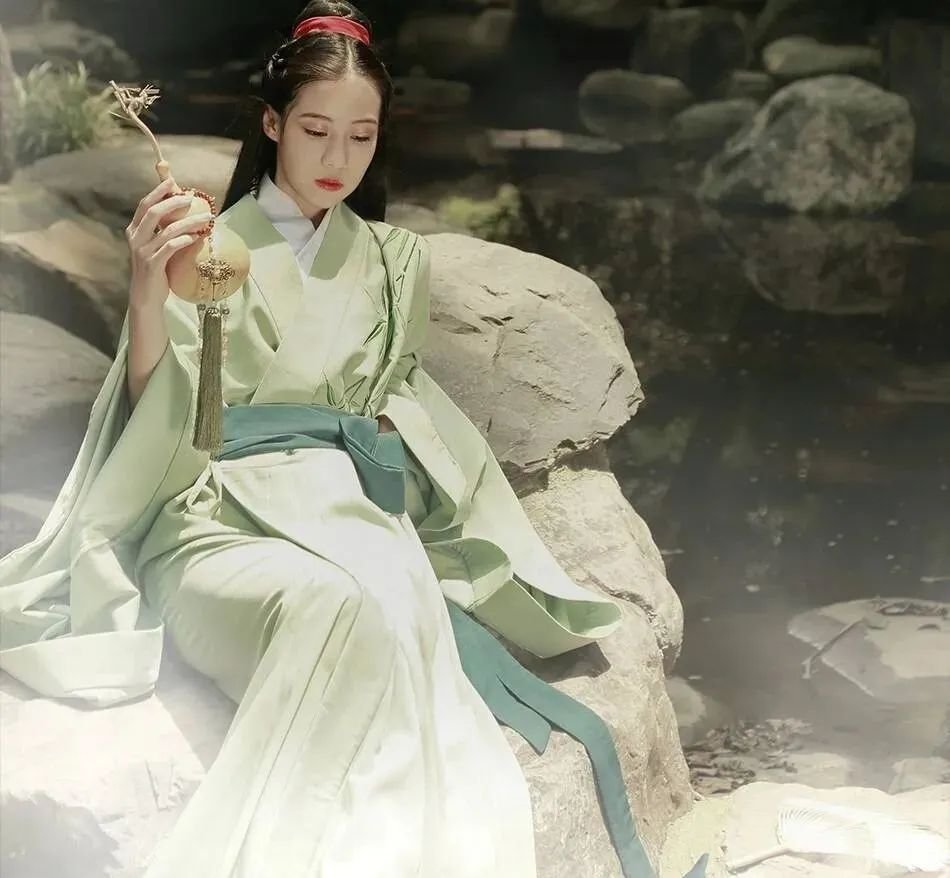
Modern Hanfu: Straight-hemmed Garment
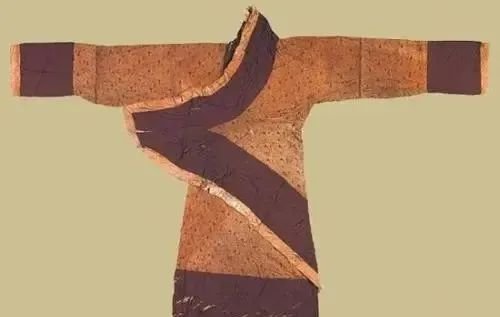
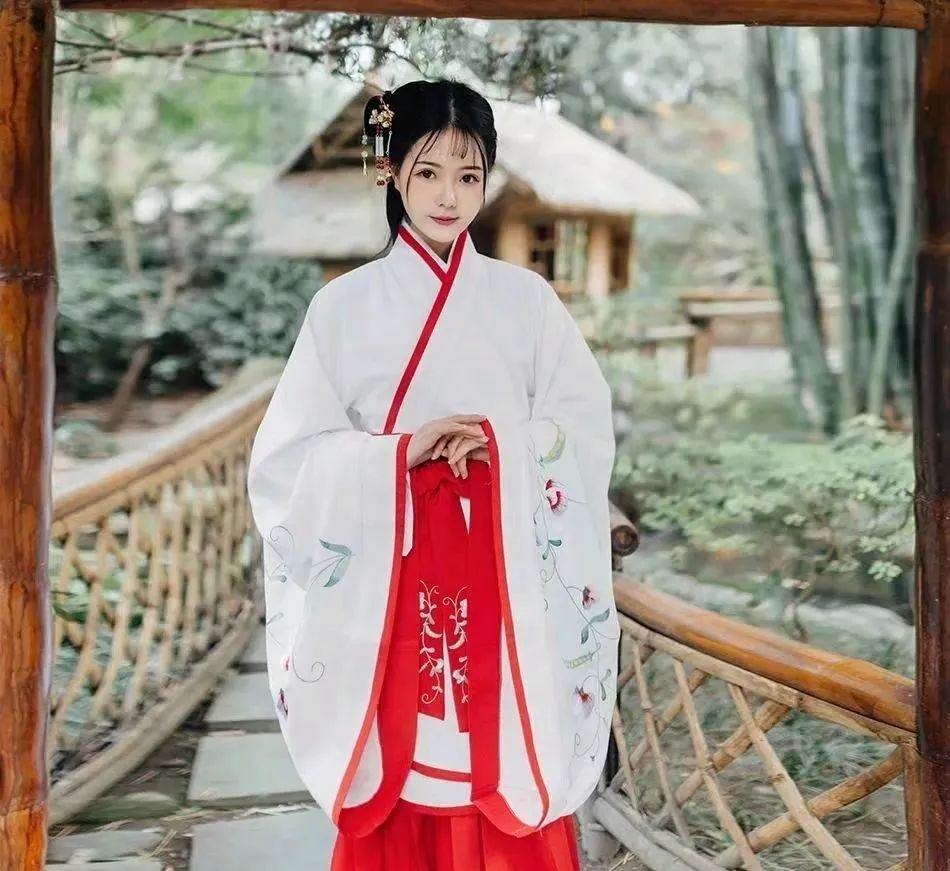
3. Pao System: The One-Piece Revolution
The Pao system broke from tradition by using a single fabric piece for the entire garment. Originating in the Sui-Tang era (581–907 CE), it introduced styles like:
- Yuanling Pao (round-collared robe).
- Dao Pao (Daoist robe), famously worn by Tang poet Li Bai.
Why It Matters: The Pao system blended Han and nomadic influences, reflecting Silk Road exchanges.
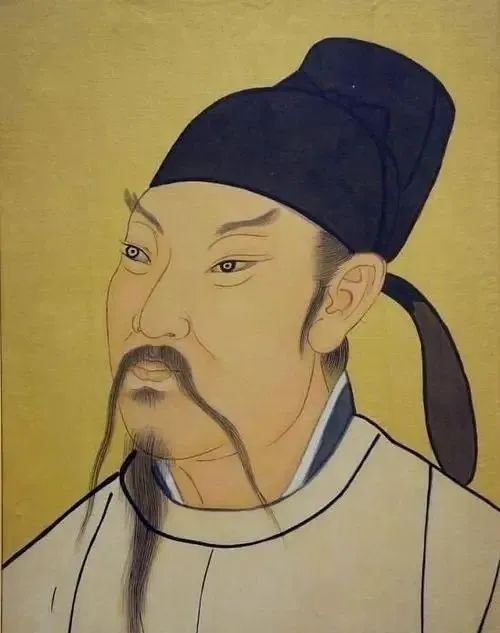
Portrait of Li Bai Wearing a Round-collared Robe

Portrait of Liu Rushi Wearing a Daoist Robe

Modern Hanfu: Dao Robe
This design allows for various types of robes, including Yuanling Pao (round-collared robes), Lan Shan (traditional robes with flared sleeves), Zhi Luo (straight robes), Dao Pao (Daoist robes), and Bei Zi (loose robes). During the Song and Ming Dynasties, the Bei Zi became especially popular, particularly as women’s formal robes.
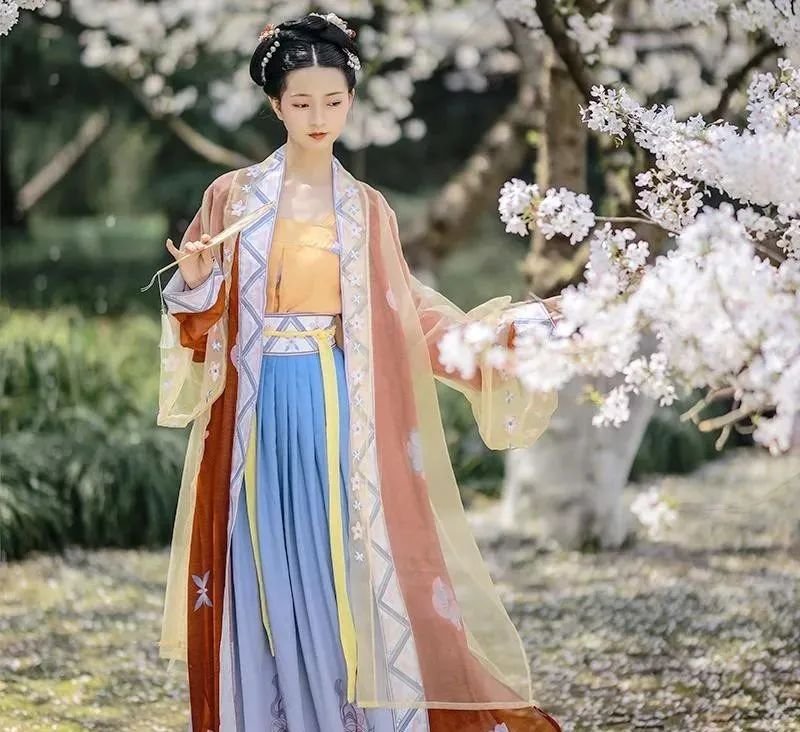
Modern Hanfu: Beizi
4. Ruqun System: Everyday Elegance
Evolving from Shangyi Xiachang, the Ruqun system paired a short Ru (tunic) with a long Qun (skirt). It dominated daily wear due to its practicality:
- Variations: High-waisted Qixiong Ruqun (Tang Dynasty), cross-collar designs (Song Dynasty).
- Cultural Impact: Depicted in classical poetry like Mo Shang Sang, symbolizing feminine grace.
Did You Know? The Banbi (half-sleeve jacket) was often layered over Ruqun for labor or casual outings.
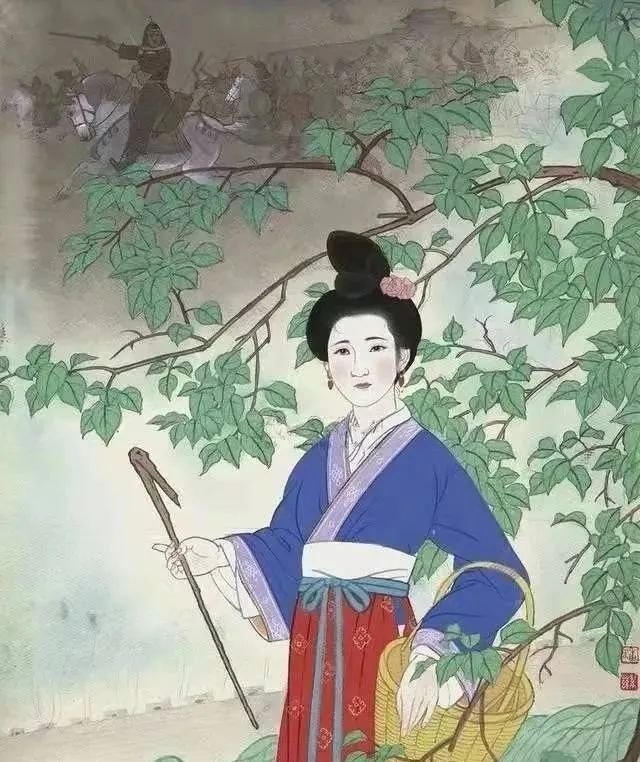
The beautiful Luo Fu in the Han Yuefu poem Mo Shang Sang, “Yellow silk for the lower skirt, purple silk for the upper robe.”
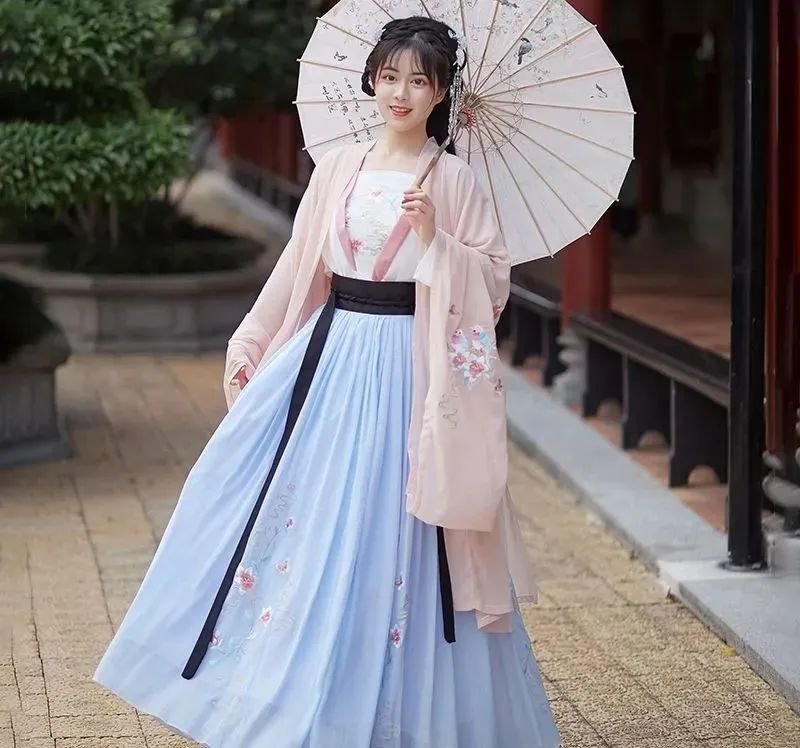
Straight-collared Ru Skirt

Cross-collared Ru Skirt
Hanfu Clothing Systems Today: Revival & Innovation
Hanfu’s dynastic designs carry deep cultural significance; explore more about their aesthetic and cultural impact.
Modern Hanfu enthusiasts blend historical accuracy with contemporary needs:
- Ceremonial Use: Shenyi robes for traditional weddings.
- Daily Fashion: Simplified Ruqun sets with cotton fabrics.
- Global Influence: Designers like New Hanfu fuse Hanfu elements with modern silhouettes.
3 Tips for Choosing Hanfu:
- Occasion: Shenyi for rituals; Ruqun for casual wear.
- Fabric: Silk for formal events, linen for summer.
- Accessories: Add Bixi (waist drapes) or jade pendants for authenticity.
Conclusion
The Hanfu clothing systems—Shangyi Xiachang’s ritual roots, Shenyi’s unity, Pao’s innovation, and Ruqun’s practicality—reveal China’s sartorial genius. As Hanfu gains global traction, these styles remind us that tradition isn’t static; it’s a living dialogue between past and present.




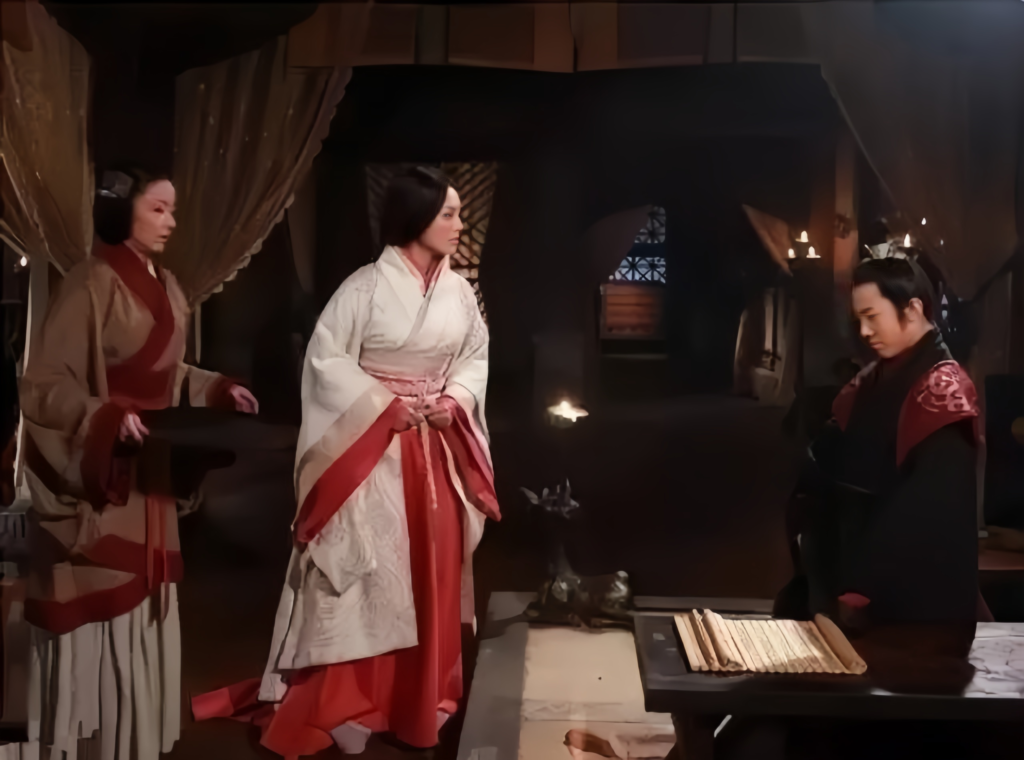
Responses